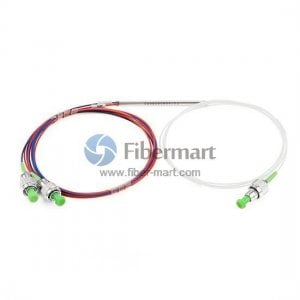To share the optic network with multiple users, fiber splitter is an important component in PON and FTTx architectures. Splitting one optic light beam into several parts at a certain ratio is the basic principle of fiber optic splitter. Fiber optic splitters can be divided into FBT and PLC splitters as per different manufacturing technologies. When choosing between them, you may wonder about the differences between the two splitter types.
FBT & PLC Splitters Differences
PLC and FBT splitters still have many differences although they may look similar to each other when it comes to actual applications. Here we are going to compare them from several other aspects.

Wavelength Range
Ranging from 1260 nm to 1620 nm, the PLC splitter has a wider operating wavelength. Thus to most of the applications in PON and FTTx networks, it can be applied. Only to be used for 1550nm, 1310nm, and 850nm wavelengths, and FBT splitter has a limitation on the contrary.
Splitting Ratio
By the outputs and inputs of a splitter, the Splitting ratio is decided. With the splitting ratio of 1:64, A PLC splitter is available which means into 64 splits, one light beam can be separated at a time. However, for networks requiring the splitter configuration of fewer than 4 splits, and FBT splitter is used typically. It will cause a higher failure rate and more errors will occur when its splitting ratio is larger than 1:8. Thus to the number of splits in one coupling, the FBT splitter is more restricted. The fiber coupler is also useful.
Price
Its cost is generally higher than the FBT type Owing to the complicated manufacturing technology of the PLC splitter. FBT splitter is a cost-effective solution if your application is short of funds and simple.
Temperature-Dependent Loss
By the sensitivity of the device and manufacturing process, Temperature-dependent loss (TDL) of the splitter is affected. Insertion loss will influence the performance of the fiber splitter and increase once the working temperature of the splitter is out of range. At the temperature of -40 to 85 Celsius degrees, the PLC splitter can work while at -5 to 75 Celsius degrees, the FBT splitter can only work.

Follow our Facebook and Twitter for more information about our product.


